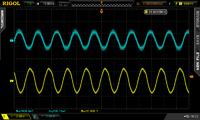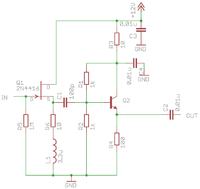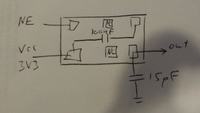itayd100
Junior Member level 3
Hello,
I connected an oscillator to 3V3 and ground. I'm getting the signal, but I'm also getting a lot of noise on the ground.
I tried to connect a diode between the GND to the GND of the oscillator but it still doesn't work.
In the picture: the yellow is the output of the oscillator and the blue is the GND


Any suggestions?
Itay
https://www.farnell.com/datasheets/1995850.pdf
I connected an oscillator to 3V3 and ground. I'm getting the signal, but I'm also getting a lot of noise on the ground.
I tried to connect a diode between the GND to the GND of the oscillator but it still doesn't work.
In the picture: the yellow is the output of the oscillator and the blue is the GND


Any suggestions?
Itay
https://www.farnell.com/datasheets/1995850.pdf

